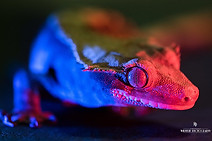Dowrick's
Scientific Services
01508 489 584
Microscopy




Dowrick's Scientific Services offer a very wide range of microscopic services to a variety of industries. Our microscopes are of the very highest specifications, and our lenses have been selected to give the best images possible.
Brightness, resolution, and scientific accuracy are major considerations in our work.
We can help you select the best option for your needs, and using internet technology you can even watch whilst we take your photos - no need for reshoots because the area of interest is just out of frame.

Bright Field
Classical Microscopy. The light is simply shone through the subject

Polarised
Polarised light microscopy uses the ability of materials to rotate the plane of polarised light. It is good for both biological and engineering projecs.

Dark Field
Classical Microscopy. The light is simply shone through the subject

Phase Contrast
Phase-contrast microscopy is an optical microscopy technique that converts phase shifts in light passing through a transparent specimen to brightness changes in the image. It is good for a variety of biological specimens.
Fluorescence
Fluorescence microscopy uses UV light to make an object fluoresce in the dark. Due to our enhanced lighting systems even larger objects can be examined with UV light.
The photo here shows a chocolate mint biscuit and a cells cytoskeleton.




Image Stacking
Image stacking is a computer technique that takes the sharpest focus areas of a stack of images and combines them into one image that has an amazing depth of field.
At Dowrick's Scientific Services we use Helicon software.

Nomarski Microscopy
Differential Contrast Microscopy is a very special way of obtaining almost 3 dimensional images in a way that does not require live samples to be fixed. This gives us the opportunity of creating some amazing time-lapse images of living biological specimens.
DIC microscopy is also extensively used in the petrochemical / geology industries and can give excellent information on surface .

Leica s8 Apo
The Leica S8 Apo is our standard for larger objects such as insects, soil, engineering samples, etc.

Olympus BX43
Image stacking is a computer technique that takes the sharpest focus areas of a stack of images and combines them into one image that has an amazing depth of field.
At Dowrick's Scientific Services we use Helicon software.

Cameras and Lenses
Our current body for capturing photomicrographs and video footage is the Nikon Z7. This mirrorless camera is capable of grabbing 4K UHD video footage @ 30fps / Full HD @ 120fps / N-Log (HDMI 10-bit output) / eVR / Attenuator.
The camera contains a 45.7MP back-illuminated FX-format CMOS sensor, and a sensor integrated focal-plane AF system.
We also have a wide range of conventional macro lenses and extension tubes available for larger scale projects.

Lighting
Photos are often not only scientific, but also often creative. To this end we offer a range of creative lighting options including Ultra Violet, and laser macro / micro lighting rigs.

UV Lighting
UV light causes many organic and inorganic samples to emit visible wavelength light that can be seen in the dark.
To the left we show the difference between a flower photographed with conventional and UV light.
To the right is a UV illuminated spider.


Facebook Live Streaming
Do you need to guide the image capture but can't get here? We are able to offer a live streaming service so that you can see what is being captured as it is being shot. A member of our staff will be online with you during the photo shoot so that you can make changes.
This service does rely on good internet connections / speeds, and is a timed service rather than a one-off fee.